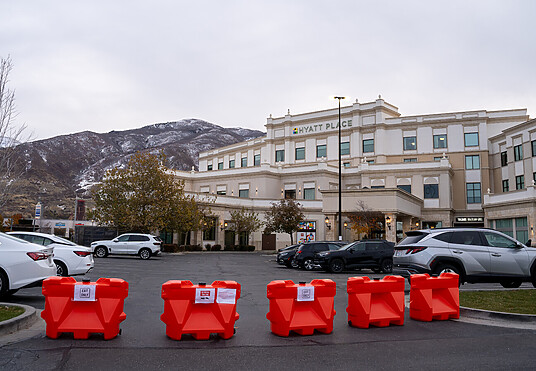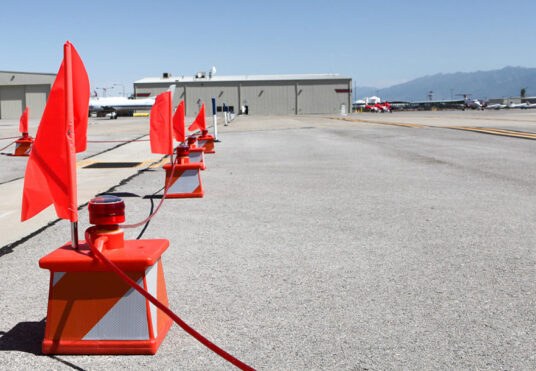Concrete Barriers: Advantages & Disadvantages
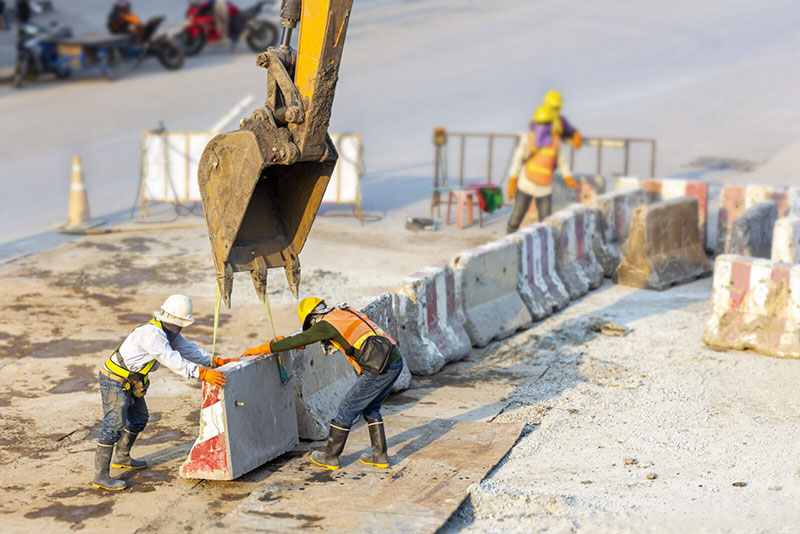
For a long time, concrete was the material of choice for construction barriers. Even today, concrete barriers are still used by construction companies and along some roadsides as medians. As the barricade industry evolved, alternatives to the concrete barrier were created, such as plastic barricades.
Having more products available and more competition in the marketplace has always been beneficial for consumers. However, it can also make it more confusing for a buyer to understand their options and ensure they’re getting the right product.
Below, we’ll break down the advantages and disadvantages of concrete barriers, and how plastic barricades compare.
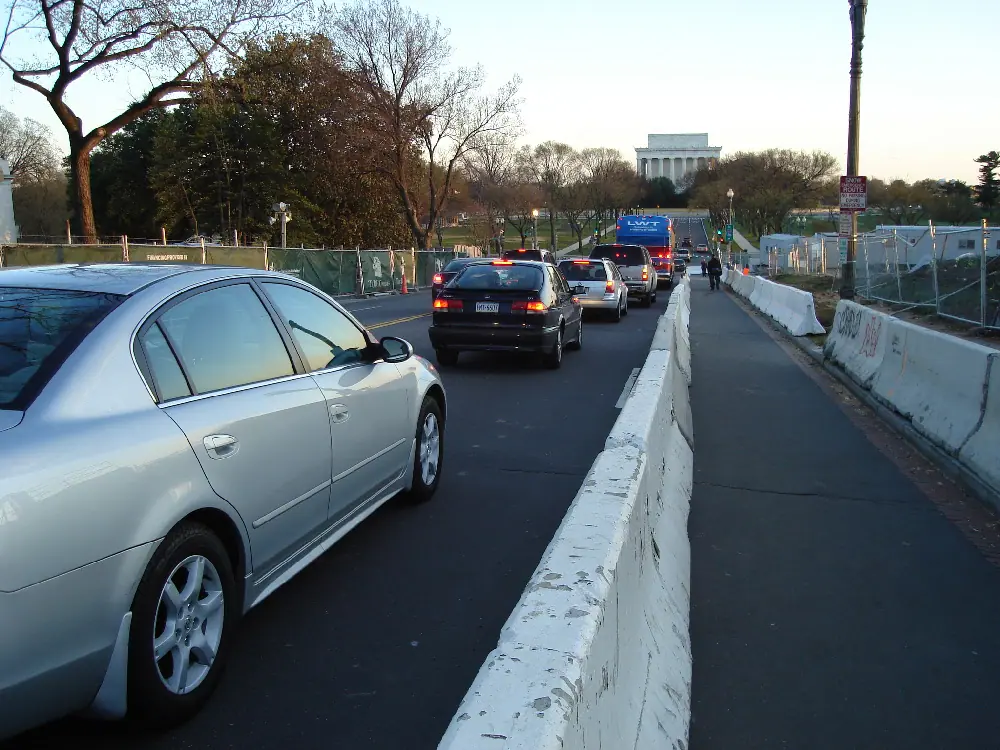
Advantages of Concrete Barriers
Barriers made from concrete are, unsurprisingly, very strong. There are certain situations where professionals have to use concrete barricades to ensure worker/driver safety at construction sites.
Here are a few positives associated with a concrete barrier:
- They are strong and can’t be knocked over easily.
- They are durable and are good choices for long-term projects.
- They also provide worker safety in certain situations.
There are two scenarios where construction companies need to use barriers made out of concrete. The first is to prevent drivers from crashing into a surface or area that is even more damaging or dangerous than concrete. The second is when construction workers are located along high-speed areas and require concrete barricades to protect them from car crashes. Plastic barriers, even when filled with ballast like water or sand, won’t be able to stop a fast-moving car like a concrete barrier.
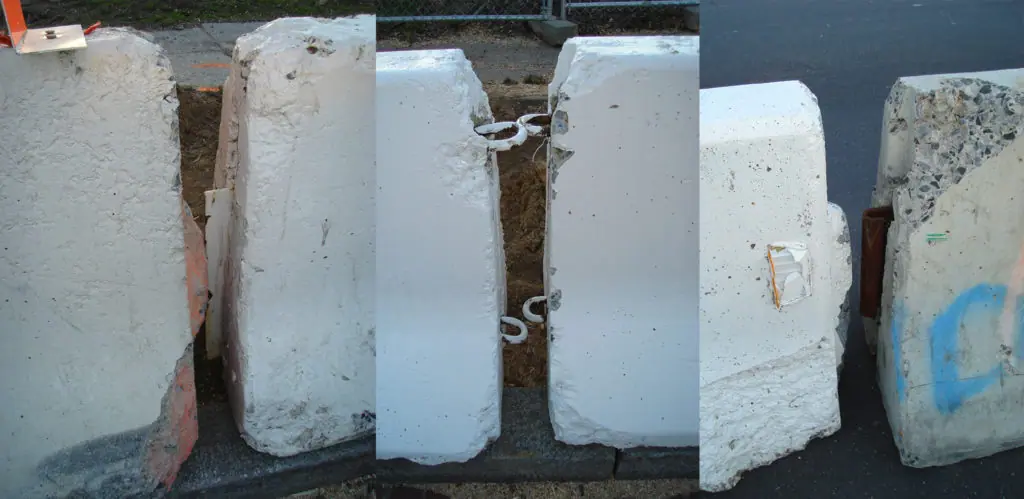
Photos from a concrete barrier line in Washington DC where the connection points to form a solid barricade line are incompatible or damaged beyond repair
Disadvantages of Concrete Barriers
Concrete barriers are necessary in a few circumstances, but they are not always the right choice.
A few of the major drawbacks of concrete barricades include:
- Heavy weight and bulkiness – This makes it difficult, if not impossible, to move, rearrange, or re-use concrete barricades for other projects.
- Long installation and removal times = lots of labor hours.
- Mediocre visibility – Drivers have a tougher time spotting a gray or white concrete barrier than a plastic barrier that is typically colored in bright safety orange.
- Less safe for drivers – Barriers made from concrete are usually more dangerous for drivers during accidents than plastic barriers.
Rarely cost-effective.
Unless a construction team has a very specific need for concrete barricades, it’s likely that a modern alternative would be a better choice.
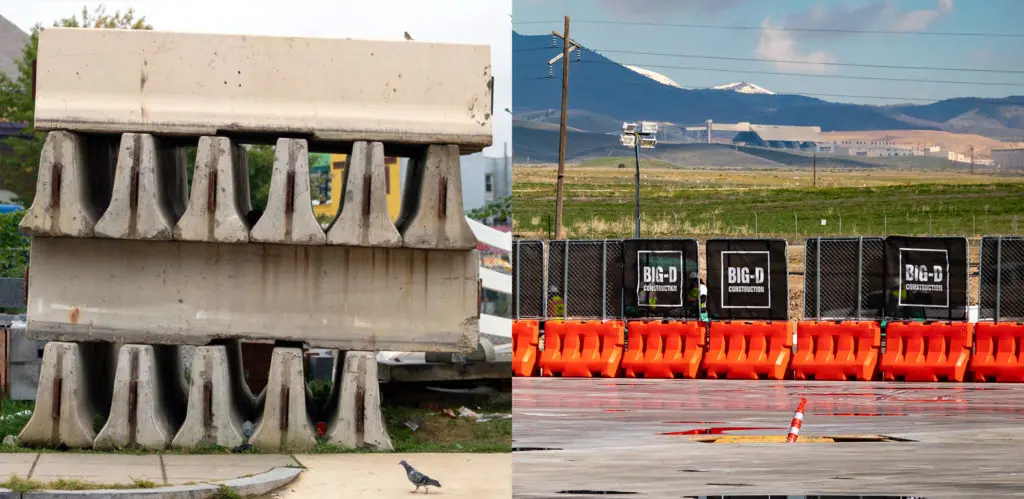
Alternative to Concrete Barriers: Plastic Barriers
Plastic barriers are both reliable and durable. Most plastic barricade manufacturers use high-density plastics to withstand bad weather, collisions, and years of wear and tear.
They also provide a number of other advantages, such as:
- Portability and versatility
- Customization (color, signage, etc.)
- Good for indoor and outdoor use
- Easy to install
- Easy to break down and store
- The ability to form a continuous wall
- Cost-effectiveness
Because plastic barriers are typically easier to use and more affordable, most organizations prefer this effective alternative to concrete barricades.
Final Thoughts
At OTW Safety, we manufacture, design, and sell our plastic barricades to organizations ranging from schools to airports to construction companies and more. We build our products right here in the USA, and we’re proud to deliver the highest quality barricades on the market. Check out our FAQ for more information, or contact one of our team members here to get started today.
